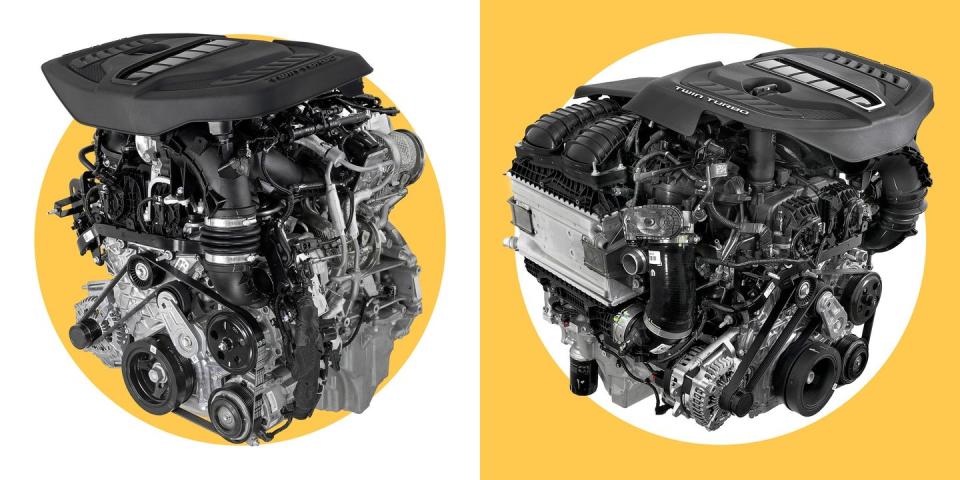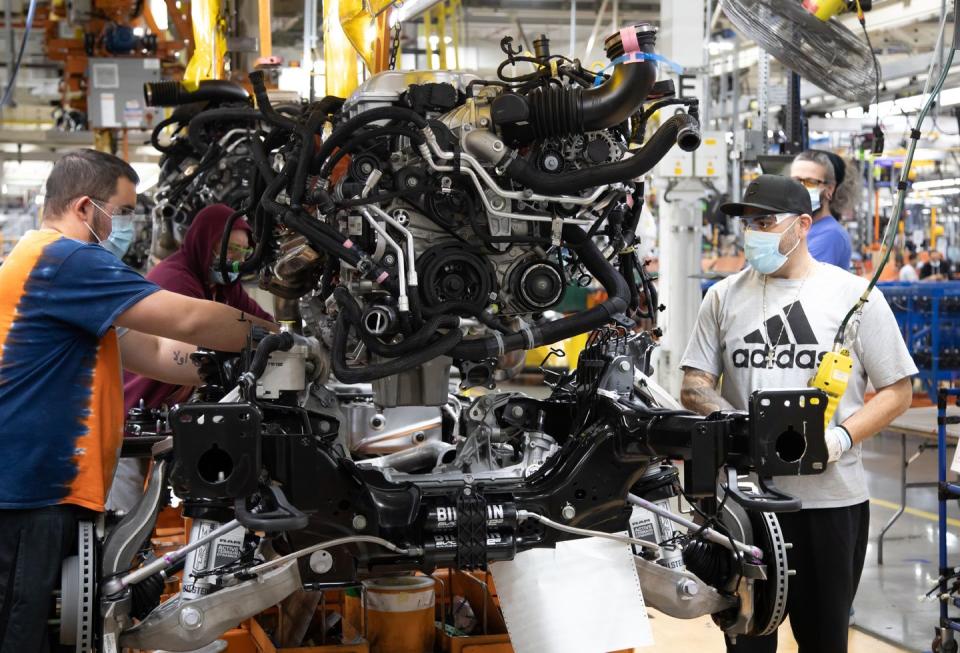Stellantis Whips Up a 500-HP Hurricane

Stellantis designed its new internal-combustion Hurricane engine to meet current and expected emissions regulations, which means it eventually could replace the aging pushrod Hemi.
By 2030, Stellantis expects half of its new vehicles sold will be all-electric. That means a lot of sophisticated combustion engines will be necessary to supply the other half of the market.
Two versions of the engine will be available: a standard output (pictured left, above) making at least 400 hp and a high-output variant (pictured right, above) producing at least 500 hp.
The automotive world is gung-ho for the era of battery-electric vehicles, which explains why billions of dollars, euros, yen, and yuan are being poured into new facilities, batteries, and motors, and to convert existing manufacturing plants for a sea change in mobility.
So it appears Stellantis is swimming upstream with its latest announcement: The French-Italian-US automaker plans to launch an all-new, clean-sheet, inline 3.0-liter twin-turbo six-cylinder engine it’s calling Hurricane in a retooled section of its Saltillo North assembly plant in Mexico that currently builds Hemi V8s. The plant in Mexico will have capacity to manufacture 250,000 Hurricanes a year.
The first vehicles using these Hurricane engines—mostly targeted at the US market—will reach showrooms this year. Expect announcements soon from Stellantis brands intending to use standard-output (at least 400 hp) and high-output (at least 500 hp) versions.
It’s no coincidence these engines will come from the same plant currently producing the Hemi V8, which has been a workhorse in the Dodge, Ram, Jeep, and Chrysler lineups since the modern incarnation launched in 2003 during the DaimlerChrysler days.
The Hurricane engine was designed to meet current and anticipated emissions regulations. If the aging pushrod Hemi struggles to comply with future mandates, then the Hurricane could replace it with a lighter, more fuel-efficient, power-dense package.
Stellantis propulsion chief Micky Bly says the Hurricane will work well in every engine bay currently occupied by a Hemi, from Dodge Challengers and Jeep Grand Cherokees to Ram 1500 pickups and Chrysler 300s. The engine is intended for north-south installations in rear-drive vehicles and is compatible with Stellantis’ STLA Large and STLA Frame platforms designed for battery-electric vehicles.
In development for the past three years at the Auburn Hills, Michigan, tech center, the 3.0-liter Hurricane shares some of its DNA with Stellantis’ globally produced turbocharged 2.0-liter four-cylinder engine, including bore and stroke and cylinder spacing (see spec box below). Bly says less than 5% of content on the new Hurricane is shared with existing engines.

It’s worth noting this same 2.0-liter four-cylinder has appeared in two Stellantis gas-electric configurations: as a 48-Volt mild-hybrid system in the Jeep Wrangler, and also as a 400-Volt plug-in hybrid system in the Wrangler 4xe and Jeep Grand Cherokee 4xe.
Bly made it very clear the new Hurricane six-cylinder will be hybrid-compatible. The company’s Pentastar V6 and Hemi V8 have been paired with the 48-Volt mild-hybrid system for the past few years in Jeeps and Ram trucks.
Hybrid compatibility helps partially answer a nagging question: Why spend so much money (Bly isn’t saying how much) on internal combustion when electrification is all the rage?
By 2030, Stellantis expects half of its new vehicles sold to be all-electric. Across its many brands, Stellantis sold 1.7 million vehicles in the US in 2021, so that sales pace suggests more than 800,000 vehicles will need competitive powertrains with internal-combustion engines. By 2030, it’s a safe bet the internal-combustion engines that are still around will be more capable, more efficient, and more regulatory-friendly in hybrid configurations.

 Yahoo Autos
Yahoo Autos 